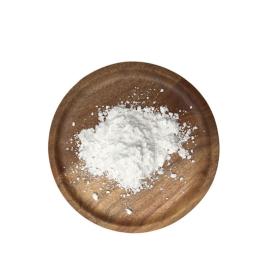-
Categories
-
Pharmaceutical Intermediates
-
Active Pharmaceutical Ingredients
-
Food Additives
- Industrial Coatings
- Agrochemicals
- Dyes and Pigments
- Surfactant
- Flavors and Fragrances
- Chemical Reagents
- Catalyst and Auxiliary
- Natural Products
- Inorganic Chemistry
-
Organic Chemistry
-
Biochemical Engineering
- Analytical Chemistry
- Cosmetic Ingredient
-
Pharmaceutical Intermediates
Promotion
ECHEMI Mall
Wholesale
Weekly Price
Exhibition
News
-
Trade Service
Recently, a study was published in the Journal of Thoracic Oncology, mainly based on a retrospective analysis of the data of a phase II clinical study (NCT01970865), evaluating the continuation of Lorlatinib after progression in ALK+ NSCLC patients treated with Lorlatinib (Lorlatinib).
curative effect
.
curative effect
.
NSCLC
A retrospective analysis of the clinical benefit of continuation of lorlatinib in patients with progression (LBPD) in an ongoing phase II trial (NCT01970865)
.
Patients who had previously used only crizotinib as an ALK TKI were group A (n = 28); patients who had previously used ≥1 second-generation ALK TKIs were group B (n = 74)
A retrospective analysis of the clinical benefit of continuation of lorlatinib in patients with progression (LBPD) in an ongoing phase II trial (NCT01970865)
The median follow-up time for groups A and B was 35.
Compared with non-LBPD patients, LBPD patients had less extracranial progression (group A: 71.
4% vs 100.
0%; group B: 67.
9% vs 94.
4%)
.
In addition, in group A patients, LBPD patients had more target lesion progression (76.
Compared with non-LBPD patients, LBPD patients had less extracranial progression (group A: 71.
About a quarter of non-LBPD patients did not receive any follow-up treatment
The overall median duration of treatment was 32.
Among patients in group A, the overall median overall survival (OS) was not reached (NR) in patients with LBPD, while the overall median overall survival in patients without LBPD was 24.
4 months (95%CI 12.
1-NR); in patients in group B , the overall median OS was 26.
5 months (95% CI 18.
7-35.
5) for patients with LBPD and 14.
7 months (95% CI 9.
3-38.
5) for patients without LBPD
.
4 months (95%CI 12.
1-NR); in patients in group B , the overall median OS was 26.
5 months (95% CI 18.
7-35.
5) for patients with LBPD and 14.
7 months (95% CI 9.
3-38.
5) for patients without LBPD
.
Among patients in group A, the overall median overall survival (OS) was not reached (NR) in patients with LBPD, while the overall median overall survival in patients without LBPD was 24.
In group A patients, the median OS after progression was not reached in LBPD patients, and the median OS after progression in non-LBPD patients was 8.
0 months (95% CI 1.
5-NR); in group B patients, the median OS after progression in LBPD patients The median OS after progression was 5.
3 months (95% CI 2.
8-14.
3) in non-LBPD patients
.
0 months (95% CI 1.
5-NR); in group B patients, the median OS after progression in LBPD patients The median OS after progression was 5.
3 months (95% CI 2.
8-14.
3) in non-LBPD patients
.
In group A patients, the median OS after progression was not reached in LBPD patients, and the median OS after progression in non-LBPD patients was 8.
In conclusion, the study shows that Lorlatinib (lorlatinib) treatment of ALK+ NSCLC patients after progression is an optional strategy
Original source:
Ou SI, Solomon BJ, Shaw AT, Gadgeel SM, Besse B, Soo RA, Abbattista A, Toffalorio F, Wiltshire R, Bearz A.
Ou SI, Solomon BJ, Shaw AT, Gadgeel SM, Besse B, Soo RA, Abbattista A, Toffalorio F, Wiltshire R, Bearz A.
Continuation of Lorlatinib in ALK-positive NSCLC Beyond Progressive Disease.
J Thorac Oncol.
2022 Jan 10: S1556-0864(21)03417-1.
doi: 10.
1016/j.
jtho.
2021.
12.
011.
Epub ahead of print.
PMID: 35026476.
Leave a message here







